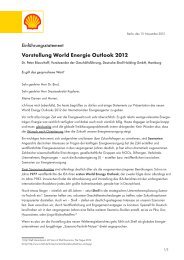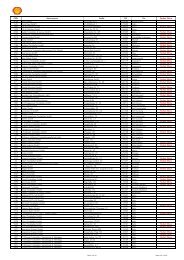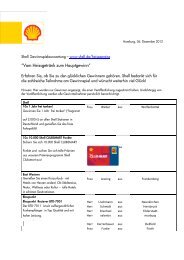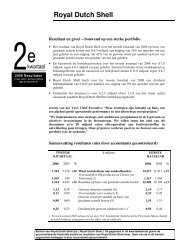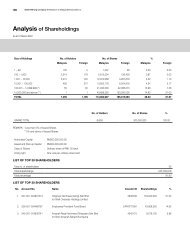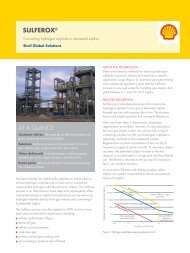ENVIRONMENTAL STATEMENT BARDOLINO DEVELOPMENT
ENVIRONMENTAL STATEMENT BARDOLINO DEVELOPMENT
ENVIRONMENTAL STATEMENT BARDOLINO DEVELOPMENT
Create successful ePaper yourself
Turn your PDF publications into a flip-book with our unique Google optimized e-Paper software.
Bardolino Development Environmental Statement<br />
Figure 4.9 Nursery areas for blue whiting, haddock, Nephrops and Norway pout in the<br />
vicinity of the Bardolino development<br />
Source: Coull et al. (1998)<br />
4.4.4 Marine mammals<br />
Marine mammals include whales, dolphins and porpoises (cetaceans), and seals (pinnipeds).<br />
They may be vulnerable to the effects of oil and gas activities and can be impacted by noise,<br />
contaminants, oil spills and any effects on prey availability (SMRU, 2001). The abundance<br />
and availability of prey, including plankton (Section 4.4.1) and fish (Section 4.4.3), can be of<br />
prime importance in determining the reproductive success or failure of marine mammals.<br />
Changes in the availability of principal prey species may be expected to result in population<br />
level changes of marine mammals but it is currently not possible to predict the extent of any<br />
such changes (SMRU, 2001).<br />
Cetaceans<br />
Most whales and dolphins range widely, and there are no species which are exclusively<br />
British. About 16 of the 80 known species of cetacean can be seen off the British coast<br />
(SMRU, 2006). These include large baleen whales such as fin, sei and humpback whales,<br />
and the largest toothed whale, the sperm whale (SMRU, 2006). Medium-sized whales are<br />
represented by the pilot and killer whales, while small species include Risso’s, white-sided,<br />
white-beaked, common and striped dolphins as well as the harbour porpoise and bottlenose<br />
dolphin (Reid et al., 2003; SMRU, 2006). Cetaceans are widely distributed in UK waters and<br />
are recorded throughout the year (Reid et al., 2003; Stone 2003a; UKDMAP, 1998).<br />
Cetacean distribution may be influenced by variable natural factors such as water masses,<br />
fronts, eddies, upwellings, currents, water temperature, salinity and length of day. A major<br />
April 2008 Page 4-27


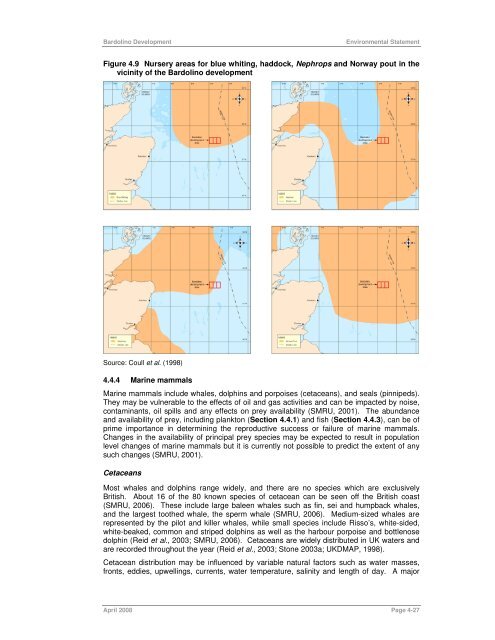

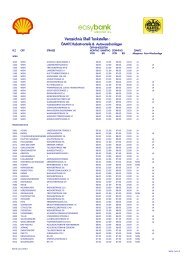
![Download Shell AutoGas Stationen [Stand: Januar 2013] (PDF](https://img.yumpu.com/9982753/1/190x245/download-shell-autogas-stationen-stand-januar-2013-pdf.jpg?quality=85)

